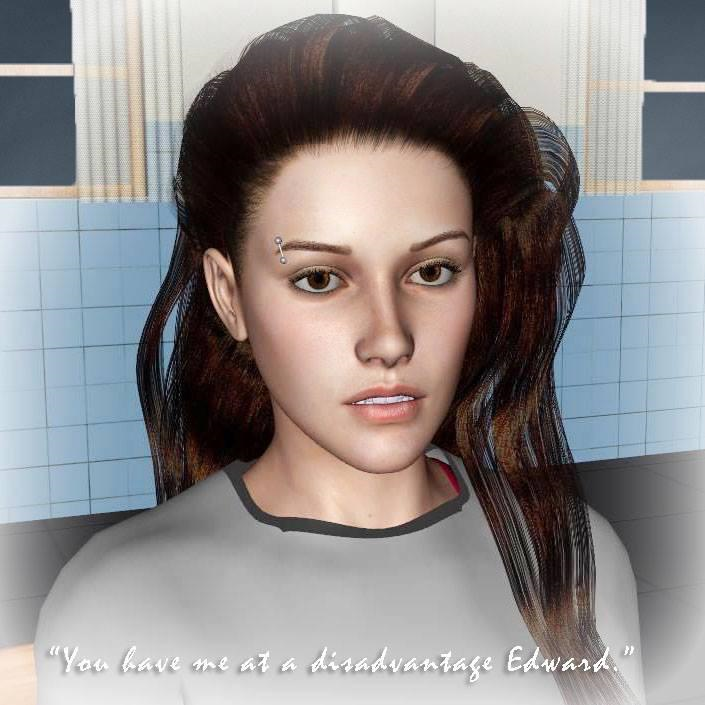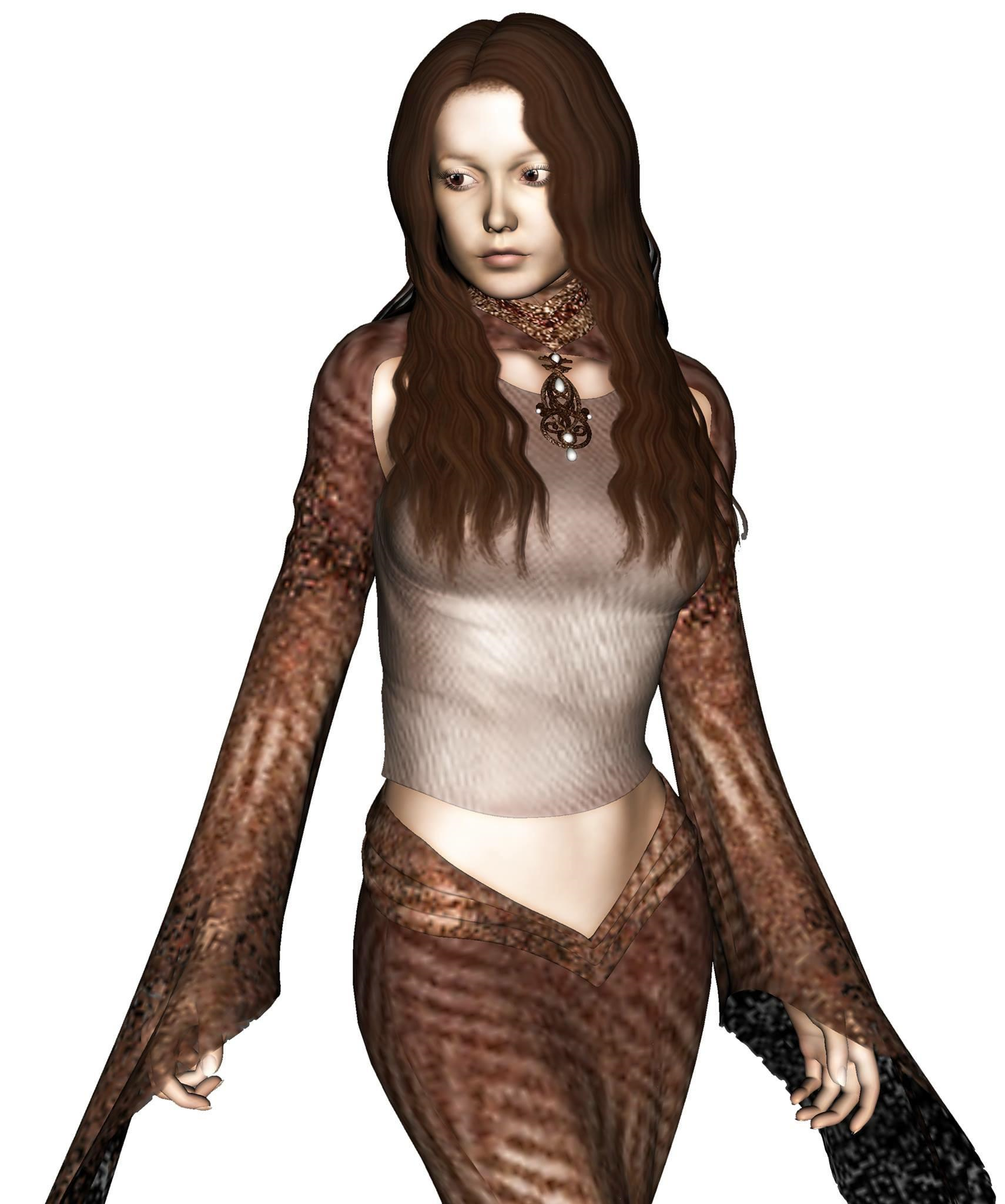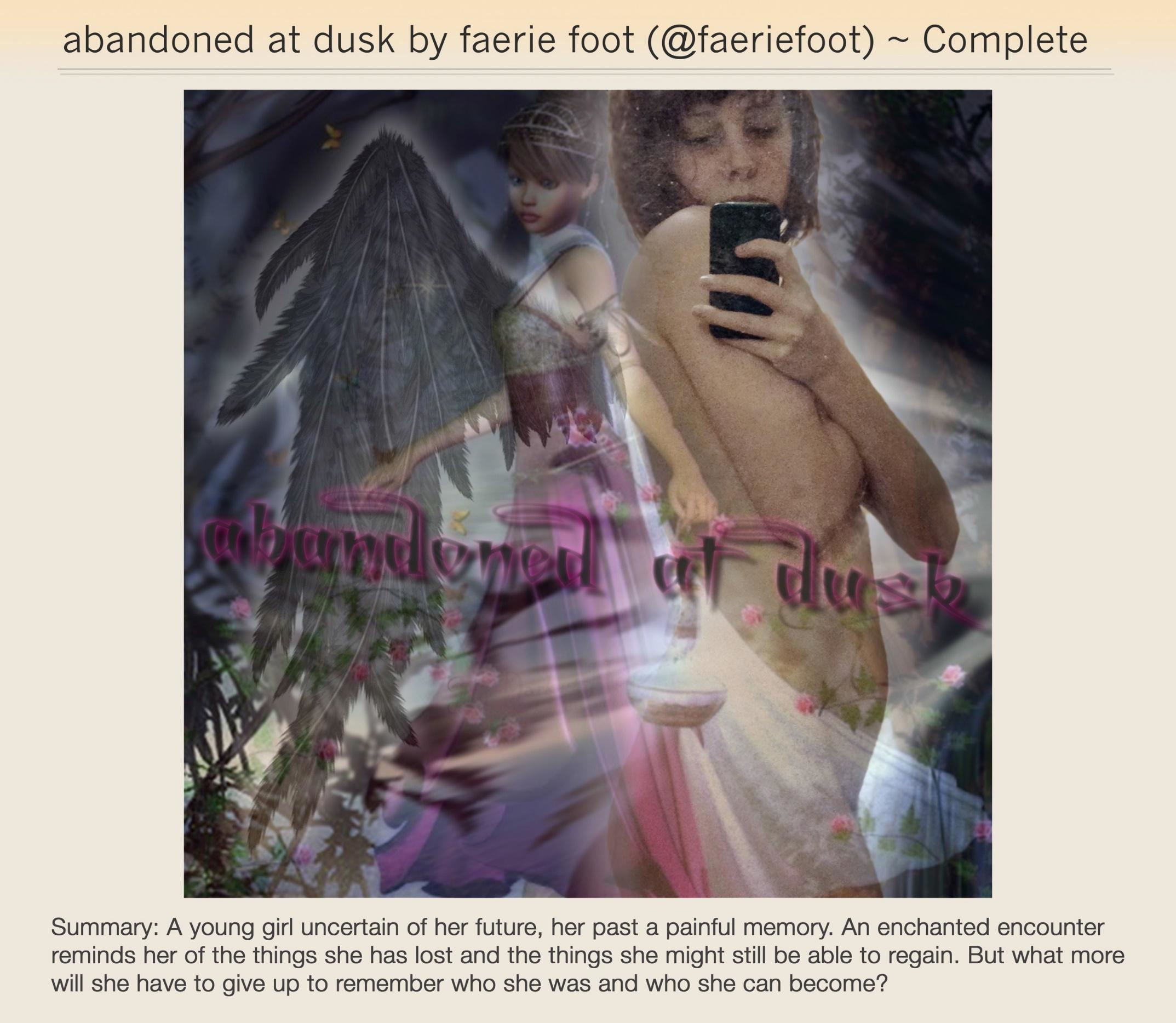disabled!
Olivia Dreisinger, Department of English Literature
McGill University
oliviadreisinger [at] gmail [dot] com
Abstract: Join River Tam on a tour through the many worlds of fan fiction and disability in the experimental audio-visual essay disabled!
Keywords:
- fanfiction
- fan art
- chronic illness
- 3D animation
1. I was unhappy
The film disabled! grew out of a period of increasing unhappiness during my graduate studies. During my first year, my chronic illnesses were becoming more permanent and less episodic. Without an official diagnosis in hand, there was very little my university could offer me in terms of accommodations or access to resources. Away from home and lacking access to proper healthcare, I also wasn’t going to get a diagnosis anytime soon. As each semester continued, it became clear that my department, too, was ill-equipped to handle a sick student; I could barely make it to campus most days, and professors repeatedly threatened to fail me out of their courses. I thought about exiting the program, feeling pushed out and unsupported by the university.
Around this time, I returned to an old interest of mine—the Twilight franchise. Returning to young adult literature also led me back to other non-canonical fiction and forms I had been interested in as a youth. I began reading Twilight fanfiction, looking at fan art, and watching fan videos. I reread one fanfic in particular, a femslash fic where Bella Swan is torn between her feelings for Edward Cullen, and her new feelings for a girl with cerebral palsy. From there, I began to actively search for depictions of disability within the Twilight fandom, and in other fan spaces.

Most of my professors and fellow classmates were entirely unfamiliar with what fanfiction was, let alone what role disability had within fanfiction. I switched my research focus and set out to change this. I began drafting thesis proposals, and petitioned my department to allow me to produce an audio-visual essay in lieu of a more traditional written thesis. I wanted to move away from purely textual formats, and towards a medium that could live and move beyond the university. Additionally, I wanted to make something that was more accessible to a nonacademic audience and to work towards deinstitutionalizing my own knowledge, language, and methodologies. Lastly, it was important that people could access the film freely through common video-sharing platforms, such as YouTube. After spending more time in animation communities, I began noticing clear crossovers between amateur animators and fanfic writers in terms of skill level, aesthetics, and values. Accessible communities prioritized making and offering accessible content to other members.
2. Learning to animate
Up until this point, I had never touched animation software—nor had I ever made a film. After researching animation programs, I downloaded Daz3D, and soon after moved on to the cross-compatible program Poser. The latter is relatively user friendly, allowing me to pick it up without prior animation experience.
For the first few months, I watched online tutorials and read through various user forums. It was important for me to remain working at an amateur and, at times, derivative level in order to align myself more authentically with fannish practices. As well, an amateur production quality allowed me greater freedom to incorporate my mistakes into the final edit and to keep things that were a bit off, matching the material that I was directly engaging with. Poser also possesses an active community that offers free tech support and free 3D assets, furthering its viability as the ideal animation software for me to use.
While building my library of 3D assets, collecting everything from jeans to shrubbery to ships from Star Trek, I came across a free fanmade avatar of River Tam from Joss Whedon’s television show Firefly: “here,” I thought, “is my narrator.” River is a non-visibly disabled character and served as a good stand-in for my own imperceptibly unwell body. By taking up the figure of River Tam, I could situate myself within the fan universe, adopting a fannish process of making and storytelling.

3. Fannish love and labor
Fannish labour holds together both the fanfic and amateur animation community. Fannish labour is inherently unpaid labour, a “labour of love,” as some academic-fans have called it (Flegel and Roth 1093). Fan communities have an established history of utilizing non-hierarchical models of information sharing, knowledge acquisition, and artistic practices. They’re horizontal, communal and collaborative. The fanfic community, for instance, is made up of different members: content producers, moderators, beta reviewers, and readers, collectively working to write and review stories. Everyone is needed in this process, and everyone is simultaneously contributing a great deal of labour, whilst gaining individual experience. For instance, reviewers gain skills in editing, content producers gain skills in writing, and readers become more literate. I see this kind of labour as well in the disability community. Disability communities have to collectively come up with new ways to survive, or adapt, as there are so few resources for us to fall back on. We have to be resourceful, especially when most of the work we carry out is unpaid or underpaid. We pay ourselves in experience, or pay our communities by building them up.

Since the film was part of my academic labour, I paid myself in academic standing. The film became an investment into my future as a scholar. I bought computer equipment and film editing software to get me started. Building up my film universe was relatively affordable since members of the Poser community offered free 3D assets. I purchased a few additional assets, spending a small sum on Bella Swan and Edward Cullen custom models, and dresses for River Tam.

4. Final results, possible futures
- Flegel, Monica, and Jenny Roth. “Legitimacy, Validity, and Writing for Free: Fan Fiction, Gender, and the Limits of (Unpaid) Creative Labor.” Journal of Popular Culture, vol. 47, no. 6, 2014, pp. 1092-1108.
The film took around five months to complete. I worked every day on it, often for eight to ten hours a day. My computer could only render two seconds of animation every hour, which stretched the film’s production time considerably. These technical setbacks allowed me more break time, more time to rest and sit with what, exactly, I was making, and more time to get through my own unpredictable physical setbacks and flare ups.

Overall, throughout this process, I wanted to know if there were other ways of living—of being, as an academic, a fan, and a chronically ill woman. This wanting to know is at the heart of fanfiction too, as fanfiction imagines how things could have played out differently in a separate and particular fan universe. New storylines are introduced, or old storylines are reworked. Non-canon relationships are formed. How then could my own disability play out in my own universe? What possible futures were before me? Reading disabled fanfic provided me with more options, more narratives to run with, more room to open up my own unimaginative understanding of illness.
Works Cited